Ukas
Pthooey of Tomainia
Decided to translate part of my study about the National Socialist art. This is the part about Hitler, somewhat shortened.
As the leader of the German Reich, Adolf Hitler took high control on many fields. So was the case in art. Although theoreticians, artists, curators and art dealers led by such central figures as Joseph Goebbels and Alfred Rosenberg, had an continuous discussion about art, Hitler was the authority, who ultimately decided what is art and what is not. And he felt himself entitled for the job; after all he was an artist too.
As a young boy, Hitler loved to spend his time drawing pictures of characters in historical paintings and also of houses and buildings in the small towns he lived in. He had a remarkable skill; he could look at a building for a minute and then later on draw a detailed sketch of it. As he was noticed by this, he started to dream about a career as a painter. However his old-fashioned and strict father Alois denies this and sends him to technical high school in Linz, Austria. At the age of 13, his father suffers a fatal lung haemorrhage. At the funeral young Adolf cries heart-breakingly, but simultaneously he is quite happy and enthusiastic about his newfound freedom. Two years later, just before graduation, he quits his school and starts a more cultural life in Linz. He wanders about the streets of Linz and is happy to visit galleries, museums and art exhibitions. Opera too becomes one of his passions. In there, he especially likes the pro-German works of Richard Wagner.
The year is 1907. At the tender age of 18, Hitler decides boldly to actualize his dreams and apply to the respected Academy of Arts in Vienna. After two days of admission tests Hitler was optimistic and confident, but was seriously disappointed. Of 113 applicants Hitler belonged to those 85, who weren’t let in. His drawings were judged unsatisfactory, especially model drawing was his weak point. Nevertheless the professors encouraged him to apply to architectural department of the academy, but this was out of his reach. Hitler would have needed the leaving certificate from his old school to apply!
“It was like a shocking bolt of lightning would have blinded me…” – Hitler describes his feelings in Mein Kampf.
Although he failed at the exam he is fascinated by Vienna and decides to stay there.
He becomes friends with August Kubizek, who wishes to study to be a composer. However August has similar problems with his parents that Hitler did. Hitler persuades Kubizek’s parents to let their son to go to Vienna, and one argument he uses is that August would be living with a bona fide art student. Hitler and Kubizek move together to share a small and cheap apartment. Kubizek told afterwards, that Hitler was very careful to spend money, but bought only the best colours, paint brushes, paper and canvases. In 1908, Hitler applies to art academy for the second time, with no success. His friend Kubizek has a successful first year in his music academy, and perhaps out of jealousy, or courtesy, unlucky Hitler disappears from Kubizek’s life.
In those days the life was hard in Europe and after loosing his dream of a career as artist and also his loving mother Klara, Hitler lives the life of a vagabond in Vienna. He sleeps on park benches and eats in charity soup kitchens. Winter is a cold one and as a penniless pauper, he has no choice but to live in homeless dormitories and cramped shelters of the poor. During his poor years in Vienna he manages to make few Marks by painting hundreds of watercolours and some oil paintings, which are sold by Reinhardt Hanisch, another unemployed. With the help of Hanisch, Hitler gets also few orders. One time Hitler is startled, as he sees one of his still lives as frame filler in a photographer’s shop. Hanisch explained that it’s sometimes really hard to find customers and got Hitler to paint also posters for shops and boutiques. With the pay he had from a single work, he could eat couple of times or spend a night in some cheap room. He was as Bohemian as one can be.
1913 Hitler fulfils one of his dreams; he moves to Germany and by doing so dodges the mandatory service in the Austrian military. In Munich he lives in Schwabing district, where also modernists like Wassily Kandinsky and Paul Klee resided at the time. It is highly probable, that Hitler never met these masters – as Hitler was increasingly interested in politics. Some artists who lived in Munich claimed that sometimes in Cafes this odd young man, who claimed to be an artist or an art student, turned a friendly discussion of art to a heated political debate in only a single minute. When the Great War starts in 1914, Hitler like many others greets it happily and feels adventurous.
In the front, during the breaks, Hitler paints and sketches buildings and sceneries he saws – which are often mauled by artillery. As his comrades have witnessed, again he is known about enthusiastic preaching, when the talk moves to politics. After the war Hitler had less and less time for his art, as he was driven more deeper to the world of politics. After he joined the Nazi party, he used his talents to design party insignia, such as the famous Nazi swastika, the flag, banners, bands, book covers, posters etc.
As a hobby Hitler had something going on all the time. Especially architecture began to interest him. He sketched and designed furniture, houses, city districts and even cities. When he became the leader, he had a chance to make his ideas come true. He drew sketches of buildings, which then were built by favoured architects, such as Paul Ludwig Troost and later Albert Speer. These houses were decorated with a plate which had the following text on them: “Arkhitektur des Führer”, architecture of the leader. Hitler designed different things, such as furniture for his Berchtesgaden residence and eating utensils for Reich Chancellery.
Lowest estimate of Hitler’s paintings, watercolours and sketches total number is 300. This number is doubtful, as is the highest estimate, 7000. Hitler himself estimated to have made approx. 1000 pieces. Before the beginning of the WWII, Hitler tried to trace down his works from Vienna and Munich period, for three reasons: First, he wanted to find out if the works had any Jewish influence. However, there are no evidence, that he would have destroyed any of his works. Secondly, one of his dreams was to transform his old hometown Linz to Europes (or Neuropas) art capitol, and in Linz there would be a Führer-museum, and in the museum there would be a wing for his own creations. Third, Hitler realized that the high prices which were paid for his works had little to do with their artistic value. He sometimes felt a bit ashamed, and defended that his works were amateuristic scribbles, made to pay the rent.
His works were bought, but the compensation was very good. Officials paid 5,000-6,000 Marks for the owners, when workers average monthly pay was approx. 300 Marks. When works by “degenerate artists “ were purchased compulsorily, the compensation was about 50-150 Marks. These days owner of a Hitler could get 5,000-10,000 Euros, if they are smaller watercolours and 50,000 or more if larger oil paintings. Authenticity can be hard to determine, because copies and replicas were already made back in the 1930’s.
In his paintings Hitler was best when he reproduced architectural subjects. His sense of perspective was meticulous and he loved details at the expense of everything else. Humans were portrayed awkwardly, carelessly actualized and often out of proportion. Same with plants, bushes and trees which usually worked as set for the main theme, the building. In addition his colours were tame and reserved. Especially in landscapes his manner to paint the skies was copied from 19th century Viennese painter, Rudolf von Alt, whom he sometimes liked to refer as his “tutor”. The sky was often cloudy and atmospheric, although Hitler never came close to his idols use of colour and expression. In addition of buildings and landscapes he painted numerous still lifes.
As it is with all national socialist art Hitler’s art too is rarely seen in the art museums. Few years ago Gerald Ford-museum had one of his paintings in an exhibition, but it was removed after international opposition was expressed. Even though Hitler’s art was never propagandistic, it often possesses iconographic, non-artistic value, especially among numerous hate-movements, extreme right-parties and fundamental Christians. Hitler’s paintings can be bought, some of them are even sold in the internet. Today, Hitler’s art is a popular collector’s theme, especially among wealthy extreme right-wingers with Hermann Goering’s medals and Joseph Goebbels’ original writings.
It has been estimated, that if Hitler would have had a chance to study art, he could have had a decent career as a painter, or even a notable career as an architect – and even better; the world would have been saved from many evils. Also it’s very possible, that if he got a chance to study art, he would still have caused even more harm. The time was not Hitler’s child, Hitler was a child of his time.
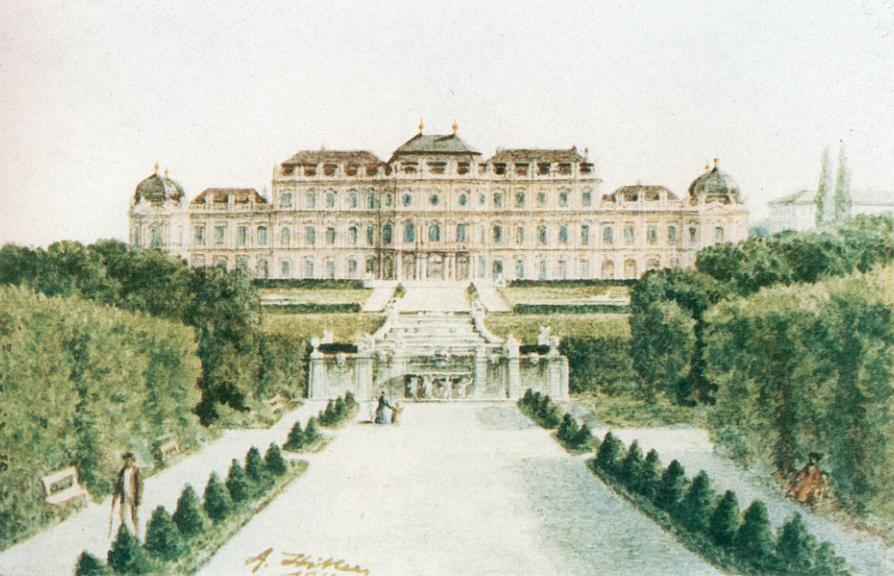
This one is rather well handled, but the general feeling you get is pale and somewhat out of proportions. Human figure on the left is ok, but others he should have left out.
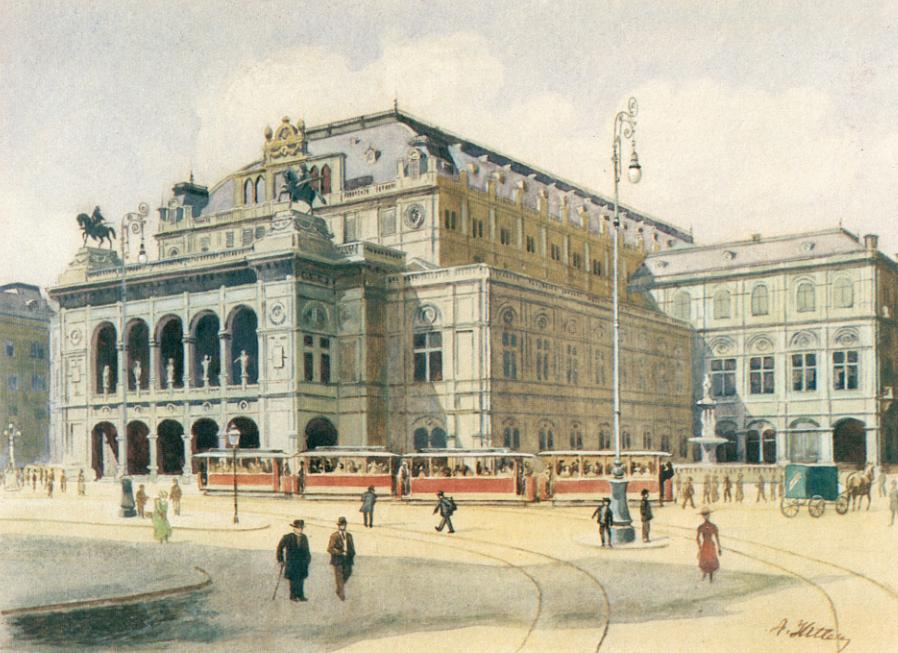
Building is quite good, again, then people close to front are very clumsy looking, out of place, proportion and sometimes out of focus.
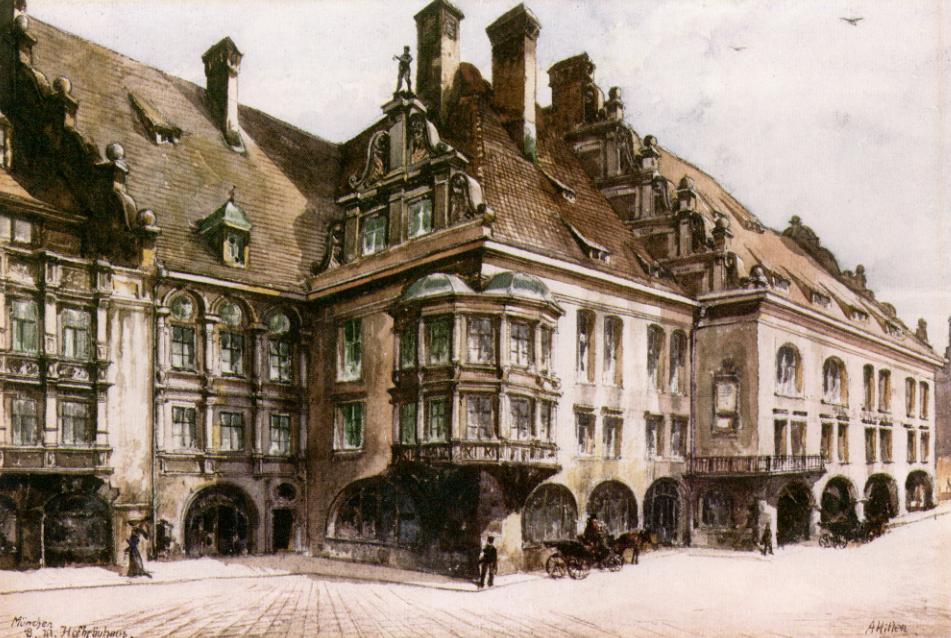
This one is one of the best I've seen from him. The house is extremely well painted and people don't bother this time.
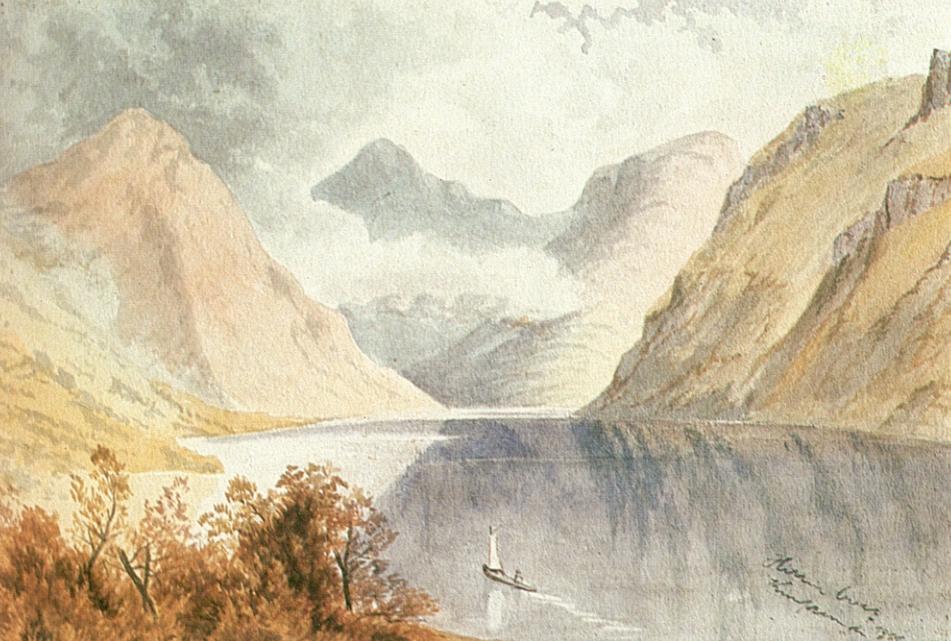
A nice one, so pale it look Japanese though.

Well done again. A fluent work with not much complaints.
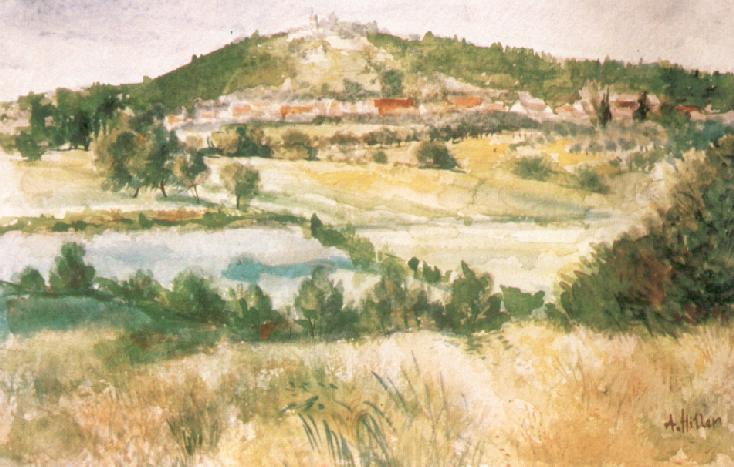
A well done watercolour, bit impressionistic, but oh-oh, might be a little impure Jewish influence there!
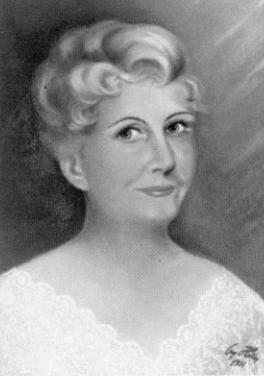
Drawing of human subjects is Hitler's problem. Here he has made a decent portrait, with few clear problems, then added some effects (like one-tone gray skin) to avoid seeing mistakes. This level is what you usually get in 1st year of art school, if there are no students with skills to draw.
As the leader of the German Reich, Adolf Hitler took high control on many fields. So was the case in art. Although theoreticians, artists, curators and art dealers led by such central figures as Joseph Goebbels and Alfred Rosenberg, had an continuous discussion about art, Hitler was the authority, who ultimately decided what is art and what is not. And he felt himself entitled for the job; after all he was an artist too.
As a young boy, Hitler loved to spend his time drawing pictures of characters in historical paintings and also of houses and buildings in the small towns he lived in. He had a remarkable skill; he could look at a building for a minute and then later on draw a detailed sketch of it. As he was noticed by this, he started to dream about a career as a painter. However his old-fashioned and strict father Alois denies this and sends him to technical high school in Linz, Austria. At the age of 13, his father suffers a fatal lung haemorrhage. At the funeral young Adolf cries heart-breakingly, but simultaneously he is quite happy and enthusiastic about his newfound freedom. Two years later, just before graduation, he quits his school and starts a more cultural life in Linz. He wanders about the streets of Linz and is happy to visit galleries, museums and art exhibitions. Opera too becomes one of his passions. In there, he especially likes the pro-German works of Richard Wagner.
The year is 1907. At the tender age of 18, Hitler decides boldly to actualize his dreams and apply to the respected Academy of Arts in Vienna. After two days of admission tests Hitler was optimistic and confident, but was seriously disappointed. Of 113 applicants Hitler belonged to those 85, who weren’t let in. His drawings were judged unsatisfactory, especially model drawing was his weak point. Nevertheless the professors encouraged him to apply to architectural department of the academy, but this was out of his reach. Hitler would have needed the leaving certificate from his old school to apply!
“It was like a shocking bolt of lightning would have blinded me…” – Hitler describes his feelings in Mein Kampf.
Although he failed at the exam he is fascinated by Vienna and decides to stay there.
He becomes friends with August Kubizek, who wishes to study to be a composer. However August has similar problems with his parents that Hitler did. Hitler persuades Kubizek’s parents to let their son to go to Vienna, and one argument he uses is that August would be living with a bona fide art student. Hitler and Kubizek move together to share a small and cheap apartment. Kubizek told afterwards, that Hitler was very careful to spend money, but bought only the best colours, paint brushes, paper and canvases. In 1908, Hitler applies to art academy for the second time, with no success. His friend Kubizek has a successful first year in his music academy, and perhaps out of jealousy, or courtesy, unlucky Hitler disappears from Kubizek’s life.
In those days the life was hard in Europe and after loosing his dream of a career as artist and also his loving mother Klara, Hitler lives the life of a vagabond in Vienna. He sleeps on park benches and eats in charity soup kitchens. Winter is a cold one and as a penniless pauper, he has no choice but to live in homeless dormitories and cramped shelters of the poor. During his poor years in Vienna he manages to make few Marks by painting hundreds of watercolours and some oil paintings, which are sold by Reinhardt Hanisch, another unemployed. With the help of Hanisch, Hitler gets also few orders. One time Hitler is startled, as he sees one of his still lives as frame filler in a photographer’s shop. Hanisch explained that it’s sometimes really hard to find customers and got Hitler to paint also posters for shops and boutiques. With the pay he had from a single work, he could eat couple of times or spend a night in some cheap room. He was as Bohemian as one can be.
1913 Hitler fulfils one of his dreams; he moves to Germany and by doing so dodges the mandatory service in the Austrian military. In Munich he lives in Schwabing district, where also modernists like Wassily Kandinsky and Paul Klee resided at the time. It is highly probable, that Hitler never met these masters – as Hitler was increasingly interested in politics. Some artists who lived in Munich claimed that sometimes in Cafes this odd young man, who claimed to be an artist or an art student, turned a friendly discussion of art to a heated political debate in only a single minute. When the Great War starts in 1914, Hitler like many others greets it happily and feels adventurous.
In the front, during the breaks, Hitler paints and sketches buildings and sceneries he saws – which are often mauled by artillery. As his comrades have witnessed, again he is known about enthusiastic preaching, when the talk moves to politics. After the war Hitler had less and less time for his art, as he was driven more deeper to the world of politics. After he joined the Nazi party, he used his talents to design party insignia, such as the famous Nazi swastika, the flag, banners, bands, book covers, posters etc.
As a hobby Hitler had something going on all the time. Especially architecture began to interest him. He sketched and designed furniture, houses, city districts and even cities. When he became the leader, he had a chance to make his ideas come true. He drew sketches of buildings, which then were built by favoured architects, such as Paul Ludwig Troost and later Albert Speer. These houses were decorated with a plate which had the following text on them: “Arkhitektur des Führer”, architecture of the leader. Hitler designed different things, such as furniture for his Berchtesgaden residence and eating utensils for Reich Chancellery.
Lowest estimate of Hitler’s paintings, watercolours and sketches total number is 300. This number is doubtful, as is the highest estimate, 7000. Hitler himself estimated to have made approx. 1000 pieces. Before the beginning of the WWII, Hitler tried to trace down his works from Vienna and Munich period, for three reasons: First, he wanted to find out if the works had any Jewish influence. However, there are no evidence, that he would have destroyed any of his works. Secondly, one of his dreams was to transform his old hometown Linz to Europes (or Neuropas) art capitol, and in Linz there would be a Führer-museum, and in the museum there would be a wing for his own creations. Third, Hitler realized that the high prices which were paid for his works had little to do with their artistic value. He sometimes felt a bit ashamed, and defended that his works were amateuristic scribbles, made to pay the rent.
His works were bought, but the compensation was very good. Officials paid 5,000-6,000 Marks for the owners, when workers average monthly pay was approx. 300 Marks. When works by “degenerate artists “ were purchased compulsorily, the compensation was about 50-150 Marks. These days owner of a Hitler could get 5,000-10,000 Euros, if they are smaller watercolours and 50,000 or more if larger oil paintings. Authenticity can be hard to determine, because copies and replicas were already made back in the 1930’s.
In his paintings Hitler was best when he reproduced architectural subjects. His sense of perspective was meticulous and he loved details at the expense of everything else. Humans were portrayed awkwardly, carelessly actualized and often out of proportion. Same with plants, bushes and trees which usually worked as set for the main theme, the building. In addition his colours were tame and reserved. Especially in landscapes his manner to paint the skies was copied from 19th century Viennese painter, Rudolf von Alt, whom he sometimes liked to refer as his “tutor”. The sky was often cloudy and atmospheric, although Hitler never came close to his idols use of colour and expression. In addition of buildings and landscapes he painted numerous still lifes.
As it is with all national socialist art Hitler’s art too is rarely seen in the art museums. Few years ago Gerald Ford-museum had one of his paintings in an exhibition, but it was removed after international opposition was expressed. Even though Hitler’s art was never propagandistic, it often possesses iconographic, non-artistic value, especially among numerous hate-movements, extreme right-parties and fundamental Christians. Hitler’s paintings can be bought, some of them are even sold in the internet. Today, Hitler’s art is a popular collector’s theme, especially among wealthy extreme right-wingers with Hermann Goering’s medals and Joseph Goebbels’ original writings.
It has been estimated, that if Hitler would have had a chance to study art, he could have had a decent career as a painter, or even a notable career as an architect – and even better; the world would have been saved from many evils. Also it’s very possible, that if he got a chance to study art, he would still have caused even more harm. The time was not Hitler’s child, Hitler was a child of his time.

This one is rather well handled, but the general feeling you get is pale and somewhat out of proportions. Human figure on the left is ok, but others he should have left out.

Building is quite good, again, then people close to front are very clumsy looking, out of place, proportion and sometimes out of focus.

This one is one of the best I've seen from him. The house is extremely well painted and people don't bother this time.

A nice one, so pale it look Japanese though.

Well done again. A fluent work with not much complaints.

A well done watercolour, bit impressionistic, but oh-oh, might be a little impure Jewish influence there!

Drawing of human subjects is Hitler's problem. Here he has made a decent portrait, with few clear problems, then added some effects (like one-tone gray skin) to avoid seeing mistakes. This level is what you usually get in 1st year of art school, if there are no students with skills to draw.


 .
. ).
).  . Before they arrested/tortured/killed him (like the americans do to potential terrorists nowadays).
. Before they arrested/tortured/killed him (like the americans do to potential terrorists nowadays).



